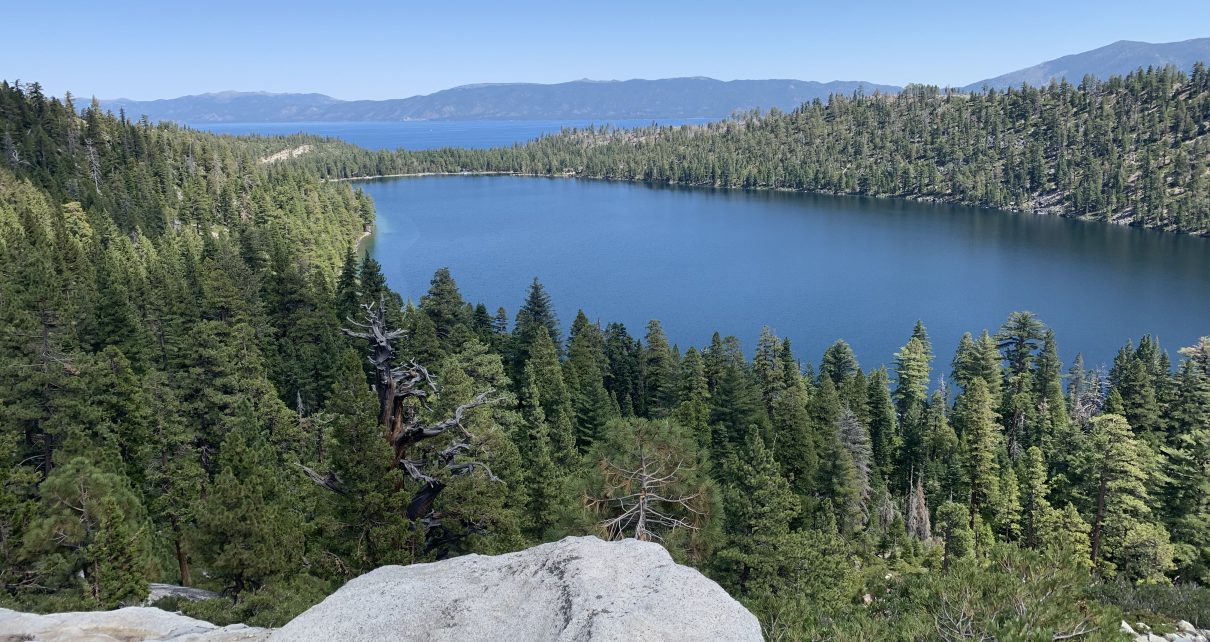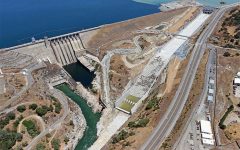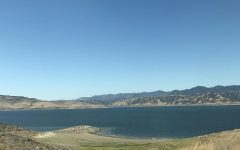
Lake Tahoe. (Photo: Kevin Sanders for California Globe)
New USDA Report Shows Lake Tahoe Will Be Full This Year, Highlighting California’s Water Recovery
The state has a bigger buffer time now and more time to plan for the next drought
By Evan Symon, May 13, 2024 2:18 pm
According to a new report by the United States Department of Agriculture (USDA), Lake Tahoe, situated on the California-Nevada border, will reach it’s “full” level for the first time since 2019, provided further evidence of California’s water recovery.
For the last 10+ years, California has had mostly drought years. A mid 2010’s drought, lasting from 2011 to 2017, covered virtually the entire state at its peak. While a few average years followed, a megadrought formed in 2020, once again covering almost the entire state. State reservoirs reached critical lows, with some so depleted of water that hydro-electric power turbines no longer generated electricity. Natural lakes, like Lake Tahoe, also saw water levels go down below its ‘full’ level in the summer of 2019. Beachgoers at the lake had difficulty getting spots because of the lower levels, and commentators during the 2021 NHL games played next to the lake even noted the size change.
However, the mega drought ended abruptly in early 2023, as 2023 became the year of rain and flooding. Several atmospheric river events struck the state in January and March, bringing down record rain amounts, flooding, and in the mountains, near record snowpack levels. Because of the rain and subsequent snowmelt, reservoirs went to near full quickly. Lake Oroville, for example, went from a 710 foot level in June 2021 to a 900 foot full brim in June 2023. Thanks to other rain events, Lake Oroville was above the 800 foot mark in November for the first time in years and the ski season lasted until early August in some parts of Tahoe.
The drought was also over. Drought levels fell to only 50% of the state in March 2023, and by November, the state became drought-free for the first time in 3 years. 2024 brought more wet weather systems across the state, with the snowpack above 100% at the critical April 1st date once again. Lakes and Reservoirs only highlighted the improvement. Average state groundwater levels rose for the first time in 4 years, with Lake Oroville, the state’s second largest reservoir, reaching full brim for the second year in a row.
Natural lakes like Lake Tahoe proved to take longer to recover, but a USDA report released on Monday found that Lake Tahoe is expected to reach back up to full brim later this year for the first time in roughly 5 years. According to the report, recovered groundwater levels in the area, combined with rain and snowstorms earlier this year and a snowpack level in the Lake Tahoe Basin reaching 102% of the average median led to revelation that Lake Tahoe is expected to be full once again later this year.
Lake Tahoe back up to full
“Once full the stored water in Lake Tahoe typically provides sufficient supply to meet demand for three years even if snowpacks are below normal,” the USDA report said. “Strong precipitation in January, February and March led to winter snowpack above the median. April 1 snowpacks were 108%–244% of median across the region and May 1 snowpacks continue to be above normal at 102%–184% of median despite a dry April and areas of record snowmelt.”
“Streamflow forecasts for the spring and summer also appear to be near normal to well above normal. In summary, water year 2024 is well on its way to receiving an A on its final report card. The difference between an A- and an A+ might come down to how much spring precipitation the region receives and how those amounts impact observed streamflow volumes.”
Water use experts told the Globe on Monday that the Tahoe report only further highlighted the turnaround and recovery that the state has witnessed in less than a year and a half.
“At the end of 2022, everyone was saying how it was doom and gloom for 2023 and that the drought would continue,” said Jack Wesley, a water systems consultant for farms and multi-family homes. “But now, we’re trying to figure out what to do with all the water. Lake Tahoe being full is important though. Reservoirs are easier to fill up or deplete. It’s how they are designed and their water usage is for people. Lake Tahoe is a natural lake though, and it takes longer to show big changes during drought years and wet years. There’s no design there.”
“That’s why the report is important. It shows that the natural levels are back to normal. This is true recovery. You can have one wet year and show full reservoirs, but the natural lake is still recovering. We saw that last year. But now with Lake Tahoe back, as well as other natural lakes in California, it shows that things have truly normalized again. You know, we still need to work on water storage expansion and revise water usage guidelines and other things to prepare for the next drought, but these Tahoe numbers, plus other recent figures like Lake Oroville, shows that the state has a bigger buffer time now and more time to plan.”
“The state has so much to worry about right now, especially on budget woes and high prices everywhere and things. So being secure on water like this? Hey, it’s one less worry for at least the near future!”
More state and federal water reports are due out soon as more water measurements are scheduled to be conducted throughout the spring and summer.
- Bill to Require Law Enforcement Disclosure if AI Was Used To Help Write Reports - August 7, 2025
- Gov. Newsom Files FOIA Request To ‘Expose True Cost’ Of L.A. Federal Troop Deployment for Anti-ICE Riots - August 6, 2025
- California Redistricting: How Newsom’s Plan Will Demolish Hard Fought GOP Gains - August 6, 2025





THANK YOU for posting this good news in BLACK AND WHITE, for POSTERITY, so the California Newscum water-whackos cannot make up drought reports and usage mandates, and people will be aware that California is blessed with abundant water supplies, that said whackos BETTER NOT WASTE for “environmental” reasons…